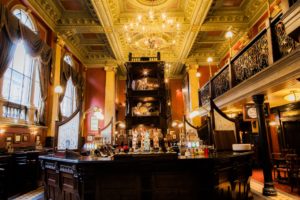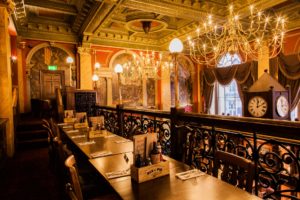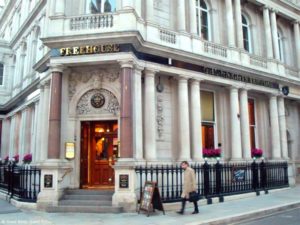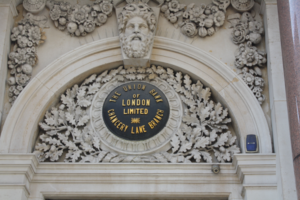 No, not financial corruption, nor even off-shore tax havens, but a post about an increasing feature on some of central London’s main thoroughfares. The rather grand buildings, usually formerly banking houses, or the prestige branches of banks, which are now used for other purposes, most specifically, those now used as pubs.
No, not financial corruption, nor even off-shore tax havens, but a post about an increasing feature on some of central London’s main thoroughfares. The rather grand buildings, usually formerly banking houses, or the prestige branches of banks, which are now used for other purposes, most specifically, those now used as pubs.
The first which came to my notice was when I was working on The Strand. The Old Bank of England opened in 1994 in the former Law Courts branch of the actual Bank of England, next door, quite literally, to the Law Courts in Fleet Street. The vaults are still there,beneath the building, though one has been converted into a kitchen and another is the pub’s cellar. The Crown jewels, it is claimed, were stored here during WWII.
The building itself is late Victorian, but before its construction (begun in 1888) the site was previously occupied by two drinking taverns, The Cock and The Haunch of Venison, so the modern pub has  precursors. It was a favourite place for my colleagues to meet for celebrations, the sumptuous interior adding to the occasion and I can recall several ‘work’ Christmas dinners taking place in the gallery. There was nothing wrong with the food, though I cannot vouch for the present version, not having eaten there for years.
precursors. It was a favourite place for my colleagues to meet for celebrations, the sumptuous interior adding to the occasion and I can recall several ‘work’ Christmas dinners taking place in the gallery. There was nothing wrong with the food, though I cannot vouch for the present version, not having eaten there for years.
The Old Bank of England is currently run by Fullers brewery and is open Monday to Saturday, closed Sundays. Food is served every day it is open.
 There are other premises which have met the same fate. Close by, in Chancery Lane, on the corner with Carey Street, lies The Knights Templar tavern. So called because the land upon which the building stands once belonged to the order of the Knights Templar, though, given that Chancery Lane itself dates back to the 12th century, this was some while ago.
There are other premises which have met the same fate. Close by, in Chancery Lane, on the corner with Carey Street, lies The Knights Templar tavern. So called because the land upon which the building stands once belonged to the order of the Knights Templar, though, given that Chancery Lane itself dates back to the 12th century, this was some while ago.
I came across this pub for the first time only a couple of weeks ago when meeting friends. By curious coincidence one of those friends had visited it in its previous incarnation, as the headquarters of the Union Bank of London and Chancery Lane branch. The  plaque above the entrance reminds patrons of its earlier use. The Union was established in 1839 as a joint stock bank and it set up the Chancery Lane branch about 1868. It grew, taking over or amalgamating with a number of small provincial banks and had 231 branches in 1917.
plaque above the entrance reminds patrons of its earlier use. The Union was established in 1839 as a joint stock bank and it set up the Chancery Lane branch about 1868. It grew, taking over or amalgamating with a number of small provincial banks and had 231 branches in 1917.
Eventually the bank became part of the huge Nat West Bank which, in turn was bought by the Royal Bank of Scotland. On the day that the RBS was about to go under ( saved, of course, by the government ) my friend visited the Union Bank building with a legal notice requiring submission of financial information. The subsequent nationalisation of RBS took place shortly afterwards – the legislation written, oddly enough, by my spouse. Intertwining connections.
The Knights Templar is a Wetherspoons house and opens Monday to Saturday, closed Sundays. Food is served, though I have not tried it.
I’m sure that there are plenty of other instances of this phenomenon, in central London and elsewhere. It’s a good use of fine buildings, the public continuing to see their grand interiors and enjoy themselves at the same time ( perhaps rather more so than when they fulfilled their original purpose ). These two are just the ones which I know. They are certainly worth a visit.
Other historic London pubs which you might like to read about, and visit are A Fighters Arms A Perfectly Preserved Princess…. An Old Prospect


 RSS – Posts
RSS – Posts